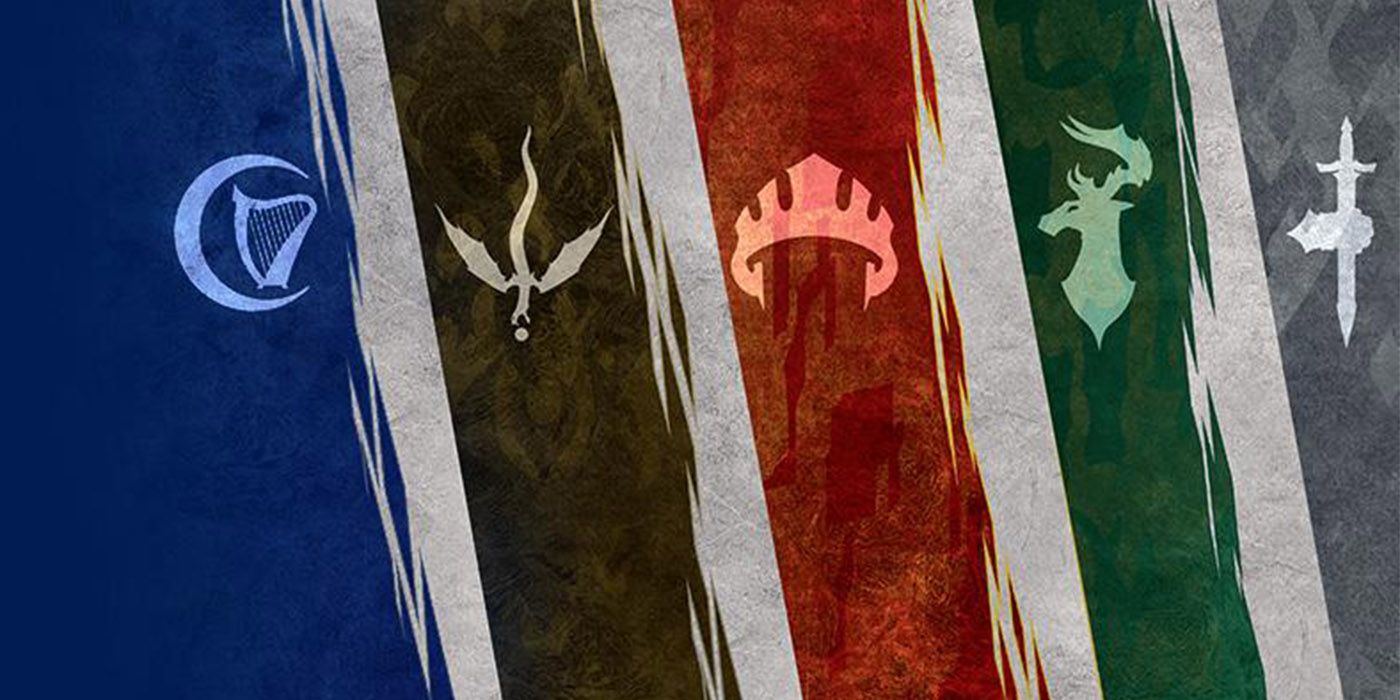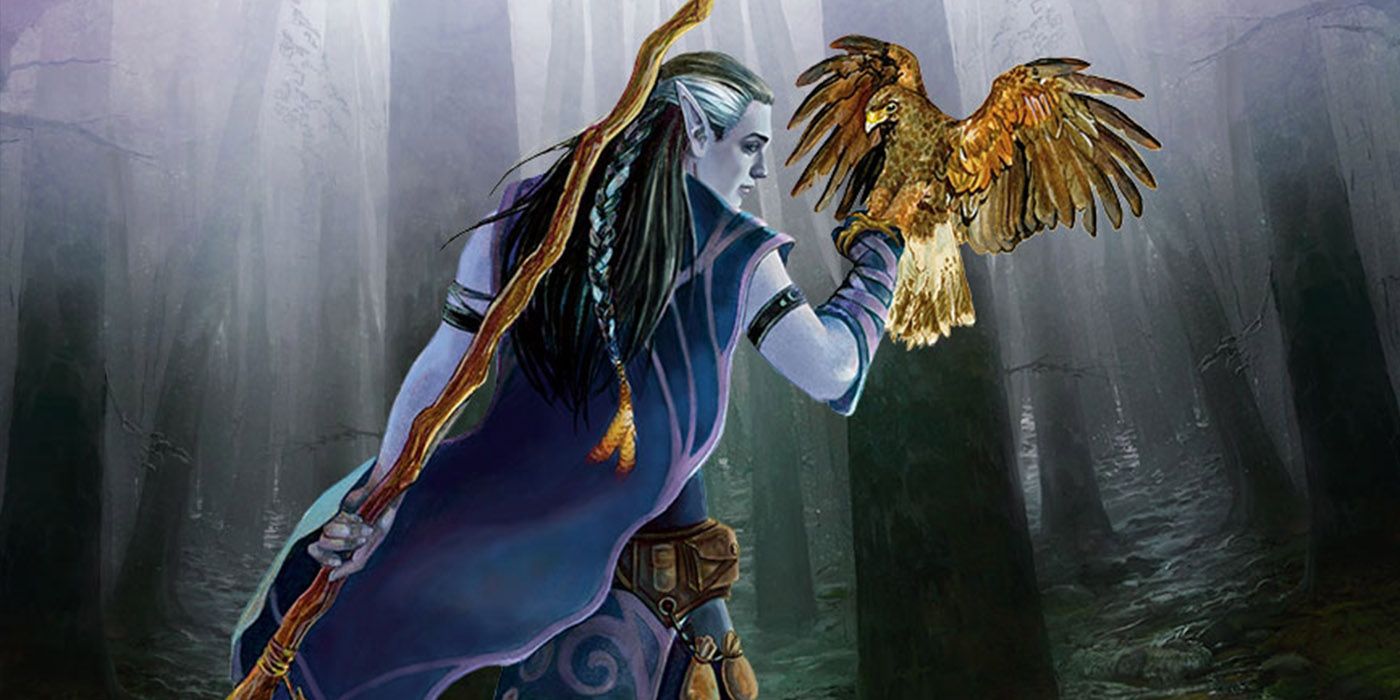Factions have existed in the world of Dungeons and Dragons throughout multiple editions of the game, and the 5th edition is no different. However, while some campaign sourcebooks may explain how a character first joins up with a faction, there's still the matter of weaving that faction through future adventures--and that's where the available D&D sourcebooks become lacking.
Dungeons & Dragons 5th edition offers five different joinable factions (some better suited to a certain class or moral alignment than others), and joining them offers some pretty cool perks within most of the pre-written adventure books available from Wizards of the Coast. That's all well and good, but shouldn't those perks come with a little responsibility? Yet the sourcebooks alone don't make joining a faction into a terribly immersive experience, so both players and DMs who want to dive a little deeper into their chosen faction can keep reading for some tips on making them a compelling primary component to an adventure.
The Harpers
Two out of these five factions are particularly notorious, with a long D&D history, and the Harpers are the first of those factions. At this point, the Harpers feel pretty much indestructible: they've risen, been shattered and beaten down, then risen once more so many times that it's hard to keep count. No matter what happens, the Harpers possess a certain tenacity that has them popping up in edition after edition of the game, not to mention many of the D&D-based video games out there.
The Harpers' longevity stems from the bond all Harper agents share; Harpers believe in fair and equal treatment for all, priding themselves on rooting out the corrupt and maintaining a balance of power. The Harpers, however, do not necessarily operate within the laws of any land to accomplish their goals, and mainly operate solo or with one of the many small cells scattered throughout Faerun and the Forgotten Realms. Agents get an amount of autonomy that those in more organized factions wouldn't have. Harpers are spies, infiltrators, and they stick to the shadows; unlike other altruistic organizations, Harpers do whatever must be done to meet their goals and refuse to be corrupted by any outside forces, believing information to be the most powerful weapon of all.
Should a country's tyrant leaders have too heavy a hand, or an organization gains too much power, their subsequent downfall could likely be attributed to the subtle influence of a Harper agent. That makes the Harpers an ideal element to use in an adventure with royal or governmental intrigue. The party can exercise their chops in stealth and subtlety; how much information can they gather? Can they fool other people into talking, or slip through enemy lines to do reconnaissance? Combat will still play a part, of course, but for those who'd prefer exploring other mechanics aside from D&D's basic combat encounters, the Harpers are ready to go.
The Lords' Alliance
Here's the more lawful, organized, and stereotypical version of an organization that protects people and routes evil forces. The Lords' Alliance is an organization comprised of members from free city-states across Faerun. Despite operating independently, the governing powers in each of these cities agree that some battles must be fought by all, and not just one. Therefore, the Lords' Alliance exists in just about every region, poised to stand against any threats that arise.
Members of the Lords' Alliance are more than likely fighters, or some martial-minded class, although there are certainly battlemages and clerics within the faction's ranks as well. Any player characters joining up should be prepared to go on the offense (the Alliance's favorite method of defense) and protect both civilization and its leaders. For more standard good-aligned campaigns--or even possibly neutral, considering the goal of the Lords' Alliance is 'unite to survive' --it shouldn't be difficult at all to incorporate the faction. Dungeon crawls, dragon attacks, and all the good stuff that players expect out of a D&D campaign pair perfectly with a Lords' Alliance questline.
The Order of the Gauntlet
But the real knights in shining armor of Faerun aren't in the Lords' Alliance; they're members of the Order of the Gauntlet, a faction composed of paladins, clerics and the like who see fit to stand together against the evils that arise across the land. The Gauntlet also has a 'defend by going on the offensive, strike hard and fast' policy similar to the Alliance, and rarely see the sense in acting as lone wolves like Harper Agents. So, what's the difference between the Gauntlet and the Alliance? When both factions are boiled down to basics, their distinction lies in their members' loyalties.
While individual members of the Alliance might be religious, the organization itself is secular, whereas the Gauntlet is all about religion. Members aren't beholden to any single king or area in Faerun; Gauntlet members are loyal to each other and to their god, and this allows the Order to expand far past the Alliance's normal reach. Needless to say, evil-aligned characters aren't going to find much fun here (unless the fun is in thwarting the Gauntlet), as most paladins and clerics who join are worshippers of Tyr, Helm, Torm, and Hoar. Planning a righteous quest against sinister forces wielding powers of the divine? Add the Order of the Gauntlet into the mix.
The Emerald Enclave
Now let's take a breath of fresh air far away from any of D&D's urban settings: the Emerald Enclave is a far-ranging group of individuals who defend nature against any threats while also helping people to navigate the perils of the wilderness. The Enclave's structure is much more like the Harpers, if not even more solitary and autonomous. Members of the Enclave generally work alone, relying on only themselves to handle problems that arise, though that's mostly due to the fact that many Enclave members roam the wilds or dedicate themselves to protecting sacred spots far from civilization.
Sure, any quest involving the Emerald Enclave will have to break away from the "solitary" stereotype a little, but the same could be said for a Harper questline as well. While it'd be unusual to have more than one member traveling together as a PC in the party, it certainly wouldn't be impossible; the more,the merrier. Druids, rangers, and barbarians are the most common members of the Enclave, but any character with a reverence for nature and a commitment to defending its balance would be a welcome addition to the ranks.
The Zhentarim
Finally, here's that second notorious faction that most seasoned D&D players have at least heard of: the Zhentarim. While all of the above organizations are only suited for good or neutral-aligned characters, the Zhentarim fall on the other end of that spectrum. Neutral-aligned characters could find a place within the Zhentarim, but it's also comprised of people with the 'evil' alignment. It's commonly referred to as the "Black Network," so that shouldn't be too surprising.
The Zhentarim are profiteers first and foremost, and their goals are very simple: to amass power, wealth, and influence across the Realms, by whatever means necessary. That's not to say the Zhentarim only ever act in a sinister manner; they've got mercenaries for hire who will gladly aid civilians in need of protection--for a price. Nothing is free to the Black Network, and everyone has a price. Zhentarim agents aren't in the business of settling for second-best, so characters who join should be ruthless in their ambitions, whatever those might be. Evil-aligned campaigns now have a joinable faction to put to use, but the Black Network can crop up in good-aligned campaigns too, as an adversary. Remember those Harper spies? Maybe a good-aligned party will end up infiltrating (or being captured by) members of the Zhentarim.
Every faction has ranks, which members can work their way up. The ranks have different titles within each faction, but the general picture is organized like this: Initiate, Agent, Stalwart, Mentor, and Leader. As a party of player-characters completes adventures, the DM can award faction members points of renown, and gathering enough of these will allow characters to climb their faction's ranks.
Understandably, writing the factions into an adventure might require a little homebrew, but DMs shouldn't let that scare them off. Homebrewing a campaign can turn out to be pretty fun, and there are plenty of third-party adventures out there to look up. It's worth the extra trouble: not only can characters in a faction be handed some truly interesting quests to embark upon, but also the other factions they're not part of can be used as new villains for the party to fight. Some factions do not see eye-to-eye, after all, and the Harpers and Zhentarim, in particular, are old enemies.
Ultimately, Dungeons & Dragons' faction gameplay is about as much fun as the DM and players make it. Entire campaigns can fly by with characters technically being members, but remaining uninvolved with day-to-day faction activities. With some tinkering, any player could find embracing the lifestyle of a faction agent to be more appealing by far.



